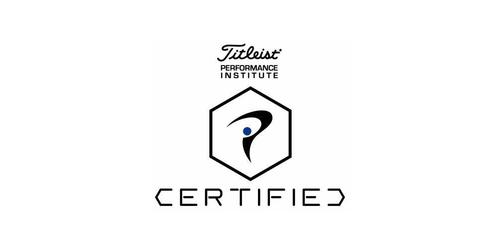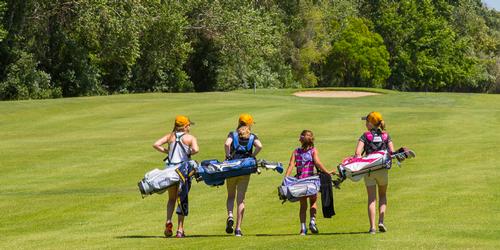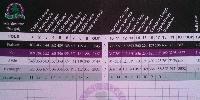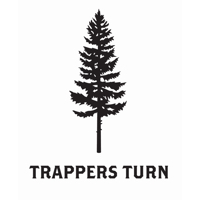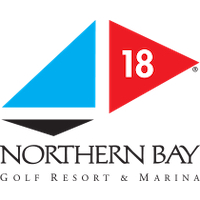Why the slice occurs.
By Bob Burns
WHAT MAKES THE BALL SPIN?
A combination of backspin and sidespin controls the ball's behavior. Backspin gets the ball airborne and sidespin makes it curve left to right. When a good player swings down with a 5-iron, the clubhead can be traveling between 80 to 90 mph as it impacts the ball, which lasts only about .0005 of a second. During this time, the ball first compresses against the clubface. The ball then slides up the clubface while creating friction and eventually responds by spinning backward as it rebounds off the clubface at a rate of 80 to 100 revolutions per second.
Sidespin is created whenever the clubhead path is moving in a direction other than the alignment you are facing. When the clubhead approaches impact from outside the target line coupled with an open clubface, there is an angle formed between the path of the club and the clubface's alignment. The impact creates the sidespin, and the sidespin causes the ball to curve from left to right. The opposite would create a right-to-left ball flight. The greater the angle is between the swing path and the clubface, the greater the amount of sidespin that results in a slice or a hook. For example, if our swing computer indicates that your swing path in 6-degrees outside in and your clubface is 5-degrees open, you are actually 11-degrees open at impact. If your swing path is 6-degree outside in and your clubface is 5-degrees closed, your clubface is still 1-degree open.
Backspin causes a ball to rise into the air while sidespin causes the ball to curve. Backspin overrides sidespin, which is why higher lofted clubs do not curve as much. All shots that leave the ground have backspin. What gives each slice its individuality is its swing path, how the clubhead comes into the ball and the degree the clubface may be open or closed.
PROBLEM: The Pull Slice
Open alignment at address, plus a weak grip fails to square the clubface at impact along with the swing path that is outside in. Many players step up to the ball with the proper alignment then waggle into an open position without realizing it. Pull slicing is often caused by starting the downswing with the shoulders, arms and upper body rather than with the hips. This is the most common combination for pull slicing occurring among average- and high-handicap golfers. In an attempt to square the clubface, they start the downswing with the shoulders, arms and hands, which forces the club to swing outside in.
PROBLEM: The Push Slice
Some golfers have the tendency to take the club too far inside on the backswing, which results in the shaft pointing to the right of the target at the top of the backswing. The right arm gets trapped behind the body, forcing an inside-to-out swing path. A weak grip fails to square the clubface to the ball at impact. The result is a block to the right.
Across the Line
When the shaft points to the right of the target at the top of the swing, you are likely to swing the club too far down from the inside. When the shaft points to the left of the target, you are prone to an over-the-top motion, and a pull slice would be the result.
PROBLEM: The Straight Slice
Attempting to scoop the ball causes a breakdown or cupping at the back of the left wrist and opens the clubface while creating a nasty chicken wing. Squaring the Clubface
It is important to let your forearms rotate correctly through impact. With the proper release, the left palm faces the sky after impact and the left elbow faces down. Not releasing usually means that your forearms are not turning over and squaring the club correctly through impact. When you do not release properly, your left elbow faces the sky, while your left palm faces the ground and your right palm faces up. This is referred to in golf as the chicken wing. The resulting shot can only go right.
The Split Hands Drill
Set up with a 7-iron and take your normal grip. Then slide your right hand approximately an inch and a half below the left. The split grip encourages you to cock your wrists in the backswing and rotate your forearms in the forward swing. Done correctly, your forearms should fully rotate, giving you the feeling that the toe of the club is passing the heel through impact with the right arm properly crossing over the left. Just as your hands cock and your right arm folds on the backswing, your hands should also re-cock, and your left arm should fold on the follow-through, giving you a mirror image of your backswing position. The folding of your left arm on the follow-through encourages the un-cocking of your hands and allows the club to square. If you were looking in a mirror, when your left arm is parallel to the ground or in the 9 o'clock position, your wrists would have cocked and your left arm and shaft would've formed a 90-degree angle. You should see the back of your left hand or the logo on your glove. Through impact, your forearms should rotate counterclockwise toward the target and at 3 o'clock, you would see the back of your right hand in the same position as though you were shaking hands.
The Ball-Toss Drill
Starting the downswing with the shoulders is a common problem that can cause an outside-to-in swing. It also moves the head and upper body forward of the ball, which can exacerbate an already problematic slice. To keep the head and upper body behind the ball and promote swinging up through the ball rather then around the body, try this drill. Take your normal stance and hold your longest club straight out in front of you with your left hand. Place the clubhead on the ground and let the club stand vertically, supporting your left arm and some of your weight. Take a ball in the fingers of your right hand. Give yourself enough room to swing your right arm under your left. Now swing your right arm back as you would in your backswing and allow your right wrist to cock and your elbow to fold. Then throw the ball underhanded under your left arm and inside the club shaft, which remains still. Let some of your weight move forward as you toss the ball naturally. Feel your lower body rotate as your right shoulder and head stay back that will create the sensation you want through impact on a real swing. Try to duplicate that feeling of turning your body toward the target when you hit the ball. Initiate the underhanded toss with your right foot and knee, just as you would with the through-swing.
Revised: 02/11/2007 - Article Viewed 31,369 Times
About: Bob Burns
![]() Bob Burns Golf is the leading golf retailer in the Appleton area. Bob Burns Golf has continually provided our customers with excellent service and products. Selling thousands of golf clubs a year, we are committed to not selling equipment that has been deemed to infringe on the patents or trademarks of other manufacturers.
Bob Burns Golf is the leading golf retailer in the Appleton area. Bob Burns Golf has continually provided our customers with excellent service and products. Selling thousands of golf clubs a year, we are committed to not selling equipment that has been deemed to infringe on the patents or trademarks of other manufacturers.
Founded by Bob Burns (PGA Master Professional), Bob Burns Golf's objective is to provide golf enthusiasts with top-quality namebrand products at affordable prices. Our associates are knowledgeable and endeavor to help our customers get more enjoyment and satisfaction from the game of golf.
Bob Burns Golf offers a wide variety of golf merchandise including golf clubs, apparel, accessories, training aids, books, videos and golf club components. Our new online store allows our customers to shop for the same great products at the same great prices from the comfort of their home. Visit our store, or shop online, and discover the Bob Burns Golf difference.
Contact Bob Burns:
Bob Burns Golf - PGA Master Professional
920-991-9663




